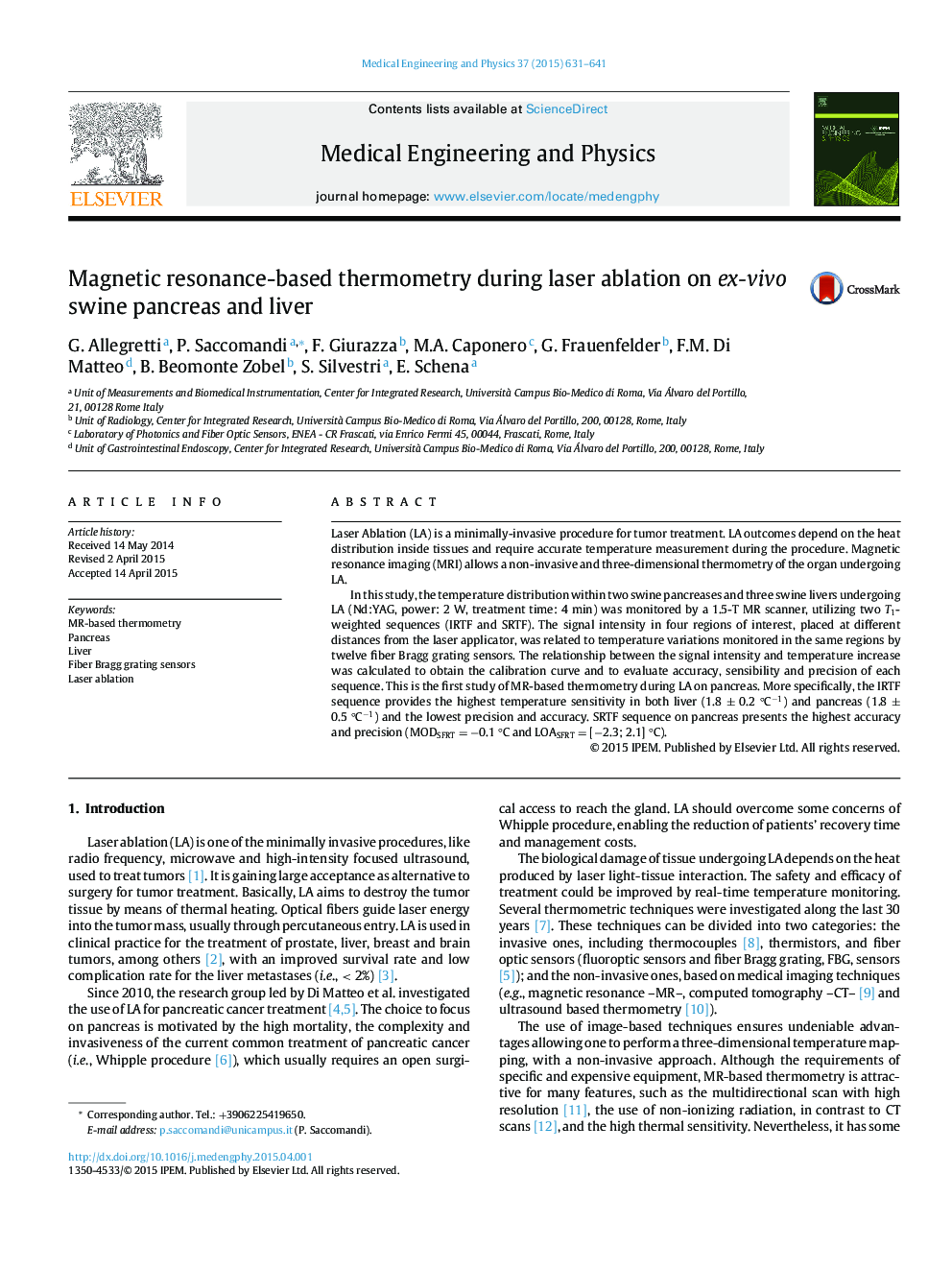| Article ID | Journal | Published Year | Pages | File Type |
|---|---|---|---|---|
| 10434983 | Medical Engineering & Physics | 2015 | 11 Pages |
Abstract
In this study, the temperature distribution within two swine pancreases and three swine livers undergoing LA (Nd:YAG, power: 2 W, treatment time: 4 min) was monitored by a 1.5-T MR scanner, utilizing two T1-weighted sequences (IRTF and SRTF). The signal intensity in four regions of interest, placed at different distances from the laser applicator, was related to temperature variations monitored in the same regions by twelve fiber Bragg grating sensors. The relationship between the signal intensity and temperature increase was calculated to obtain the calibration curve and to evaluate accuracy, sensibility and precision of each sequence. This is the first study of MR-based thermometry during LA on pancreas. More specifically, the IRTF sequence provides the highest temperature sensitivity in both liver (1.8 ± 0.2 °Câ1) and pancreas (1.8 ± 0.5 °Câ1) and the lowest precision and accuracy. SRTF sequence on pancreas presents the highest accuracy and precision (MODSFRT = â0.1 °C and LOASFRT = [â2.3; 2.1] °C).
Related Topics
Physical Sciences and Engineering
Engineering
Biomedical Engineering
Authors
G. Allegretti, P. Saccomandi, F. Giurazza, M.A. Caponero, G. Frauenfelder, F.M. Di Matteo, B. Beomonte Zobel, S. Silvestri, E. Schena,
